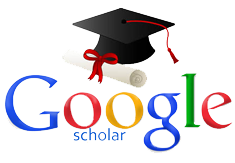Model-Model Komunikasi Linear
DOI:
https://doi.org/10.31004/jpdk.v5i1.11635Abstract
Komunikasi adalah proses,maka model berguna untuk melukiskan proses komunikasi dan dapat membuat kita mengetahui apa itu komunikasi dari sekedar definisi komunikasi tersebut. Maka itu, penelitian ini bertujuan untuk mengetahui model komunikasi linear, model komunikasi transaksional, model komunikasi konvergensi, dan model komunikasi tiga tingkat. penelitian ini menggunakan metode kualitatif dengan kepustakaan (library research) dan teknik analisis konten (content analysis). Hasil penelitian menunjukkan bahwa Komunikasi memiliki model yang memberikan gambaran tentang struktur dan hubungan fungsional dari unsur atau faktor yang ada di dalam suatu sistem sehingga kita dapat lebih mudah dan komprehensif mengenai struktur dan fungsi dari konteks individual atau organisasi maupun konteks komunikasi dengan masyarakat luas.Downloads
Published
2023-01-16
How to Cite
Efendi, E. ., Ayubi, M. ., & Aulia, N. . (2023). Model-Model Komunikasi Linear. Jurnal Pendidikan Dan Konseling (JPDK), 5(1), 3899–3906. https://doi.org/10.31004/jpdk.v5i1.11635
Issue
Section
Articles
License
Copyright (c) 2023 Erwan Efendi, Muhammad Ayubi, Najwa Aulia

This work is licensed under a Creative Commons Attribution-ShareAlike 4.0 International License.
Authors retain copyright and grant the journal right of first publication with the work simultaneously licensed under a Creative Commons Attribution-ShareAlike 4.0 International License that allows others to share the work with an acknowledgement of the works authorship and initial publication in this journal. Authors are able to enter into separate, additional contractual arrangements for the non-exclusive distribution of the journals published version of the work (e.g., post it to an institutional repository or publish it in a book), with an acknowledgement of its initial publication in this journal. Authors are permitted and encouraged to post their work online (e.g., in institutional repositories or on their website) prior to and during the submission process, as it can lead to productive exchanges, as well as earlier and greater citation of published work (See The Effect of Open Access).
.png)













